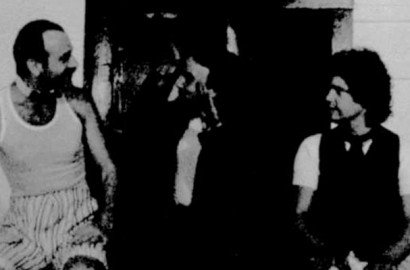Over the next month, we’ll be hearing from our Research Intern Thom Bryce about his experiences tracking down, unearthing, exploring, and cataloguing our 35-year archive of materials from The Rhubarb Festival. We’ll also be launching a new decade of material on our brand new on-line archive.
This week we look at 1990-1999: Rhubarb in Process
How do we think about artistic process? In which ways do we allow ourselves to grow and change throughout the creation of a new work? And what elements are necessary in order to facilitate those changes? A post-mortem written by playwright and novelist Claudia Dey after the staging of her 1999 Rhubarb selection (More) Beaver helped me think through some of these questions; it’s truly one of the most fascinating pieces I’ve had the pleasure of coming across while going through the festival archive.
To begin with, what’s not to love about an archival document that begins with the stage direction “Enter snowbank and string section” and includes the cautionary note to readers “Danger: punctuation”? In her six-page report, Dey approaches the creation of (More) Beaver with remarkable candour and insight, all in a tone that can only be described as utterly charming. Starting with a section titled simply “What Came Before,” Dey explains that her introduction to the festival was in 1998 with the seed of what was to become her full-length play Beaver. Crucially, it allowed the playwright the chance to see her work in front of audience members and receive from them what she deems “instant dramaturgy”: Dey provides rich descriptions of what it feels like to witness others performing your words. Rhubarb 1998 was a whirlwind for Dey and her collaborators; she compares the experience to having a freight train rush past them. Nonetheless, when the festival was over, all they wanted to do was repeat the experience.
The next five pages detail Dey’s experiences during the three-week rehearsal period. I was stunned by how these journal-like entries conjured for me a feeling of going along with the creative team deep into their process, of going there. Nestled between transcriptions of actors’ non-sequiturs and quick notations about rehearsal spaces are moments in which the writer expresses wonder and delight at how quickly things shift and progress. There are challenges, to be sure. Due to scheduling conflicts, Dey is forced to move ahead with the project without her beloved first director, Eda Holmes. But even these unexpected circumstances bring about positive changes: Dey is then given the chance to form a working relationship with a new director, Tanja Jacobs.
Perhaps what struck me most was the security and support Dey felt in showing her work in Rhubarb’s safe artistic space. Save for a few brief assessments by CBC Stereo Morning reviewer Gordon Voight and Rites critic Peter McGehee during the early incarnations of the festival, Rhubarb has maintained a critic-free environment. That environment, to my mind, is a large part of what has defined Rhubarb over its soon-to-be 35 years of existence: it’s a space where artists are free to experiment and take risks, to stretch and challenge themselves. As such, it attracts audience members who desire to be challenged. After the dress rehearsal for (More) Beaver, Dey writes a comment that has lodged in my mind ever since I encountered it: “A small and supportive audience. I am reminded that the people who come to Rhubarb want you to win.”
– – – – – – – – – –
Click here to check out The Rhubarb Archive
Related posts


